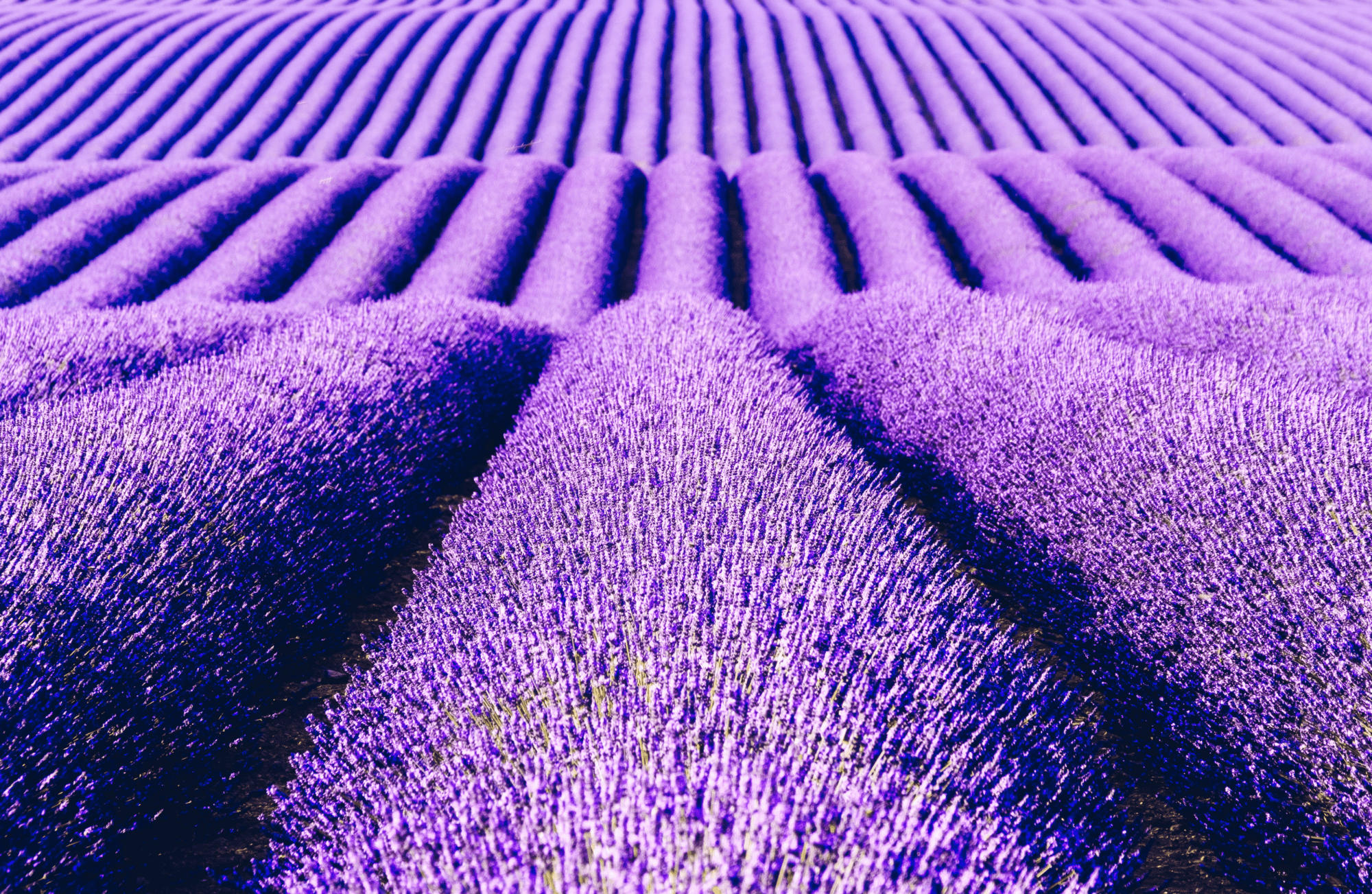Vines flow down verdant hills under sunny skies. Birdsong lightens the breeze. The scent of lavender permeates the air. This is Provence in the summer. The region in the South of France is world famous for exquisite terroir. Rustic villages blend seamlessly with abundant nature, turning Provence into a dreamy destination that never ceases to amaze throughout the whole year, even outside of lavender season.
But it’s lavender that entices even the most ardent food and wine lover visiting Provence. It’s why visitors flock to this region in the summer—2.7 million a year to be precise. Provence lavender is heady, it’s beautiful and it’s abundant. As far as the eye can see, lavender dominates the landscape come July and August. In August, especially, a seemingly infinite blanket of bluish-purple covers the hills of this region north of Marseille.
While we know summer is the best time to see lavender in Provence, the best way to admire lavender in Provence is to follow the so-called “routes des lavandes.” Originally created by blogger Lionel Terrail, a native of the region, the itinerary will take you from one notable village to another, through lavender fields and local distilleries and producers, and past landmarks of the region.
From the villages of Vaucluse, Drôme Provençale, and Haute-Provence, we guide you to the best sports to see lavender fields in Provence, offering four separate itineraries that can be followed alone or, if you have the time, together. Allons-y!
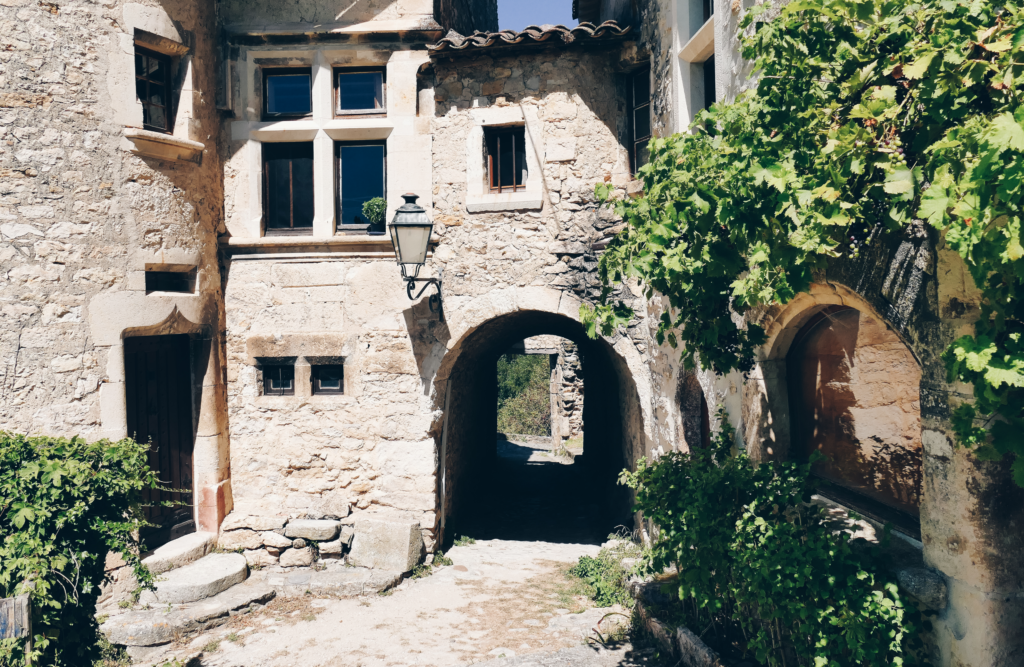
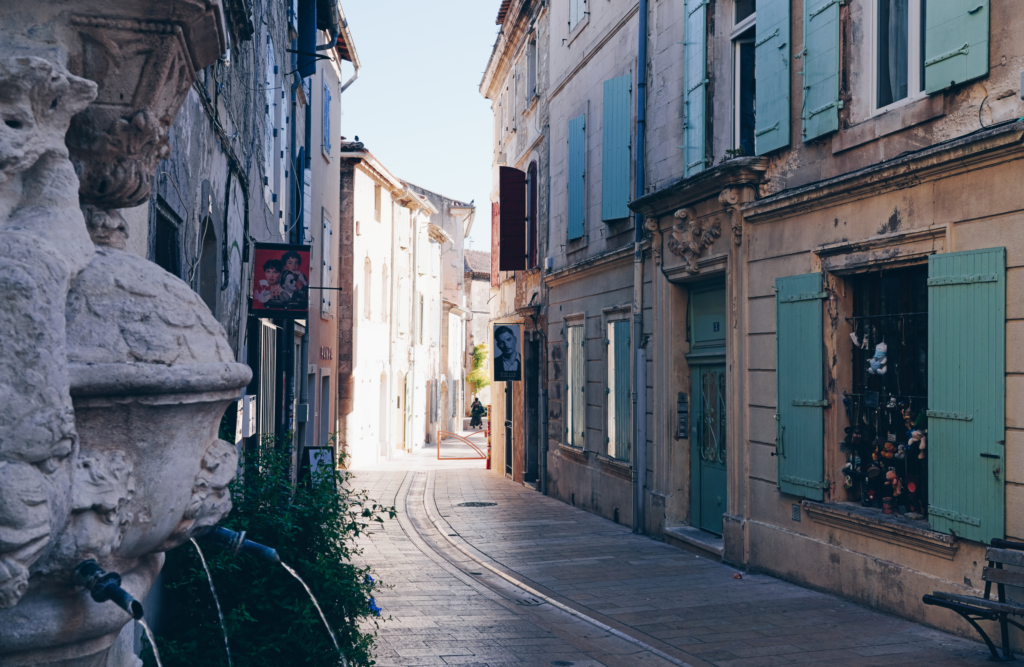
Hot Tip: You can access the lavender villages from the main cities of the Provence Alpes Côte d’Azur region: Aix-en-Provence, Avignon, Marseille or Orange. For a more relaxing stay, Saint-Rémy-de-Provence offers a tantalizing mix of culture, art, and nature. Vincent Van Gogh was a fan and you will be, too.
Gordes to Sénanque
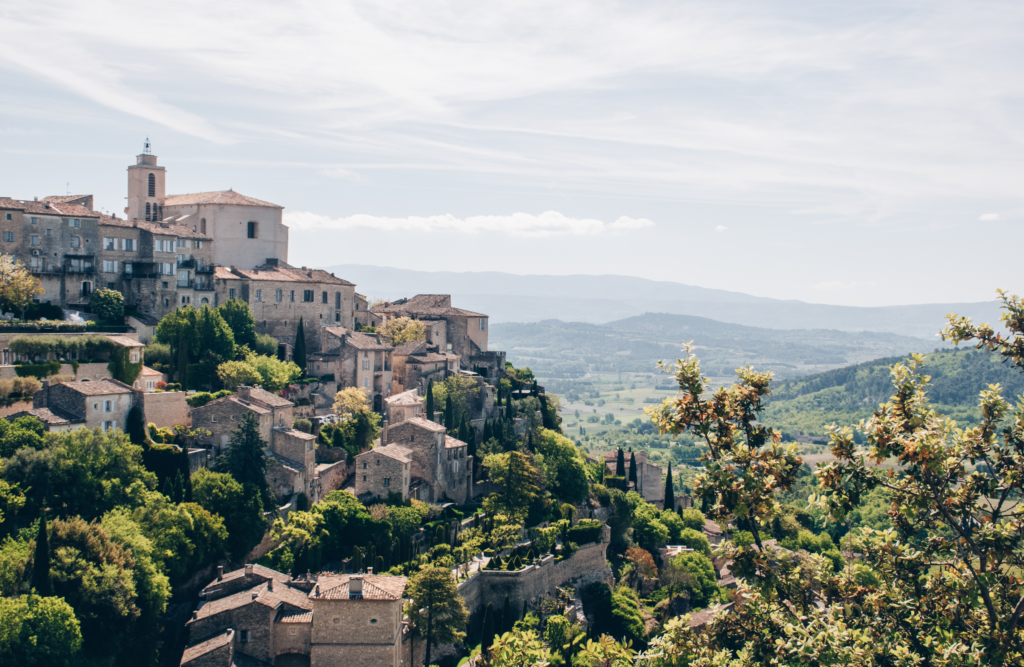
Listed among the most beautiful villages in France, Gordes is one of a host of small towns in Provence perched on a hill. Less than an hour from Avignon and Aix-en-Provence in the Luberon Natural Regional Park and between the Vaucluse Mountains, Gordes rises majestically from the land. At more than 900-feet above sea level, it’s hard to miss from the road. Its 11th-century chateau dominates the landscape.
Gordes is an ideal starting point in your lavender journey. After a cultural tour of Gordes medieval center and a walk through the stone lanes surrounding the village that lead to a promontory affording breathtaking views of the countryside, head back down and continue north to the village of Sénanque to reach one of Provence’s most treasured landmarks: the Abbaye de Sénanque.
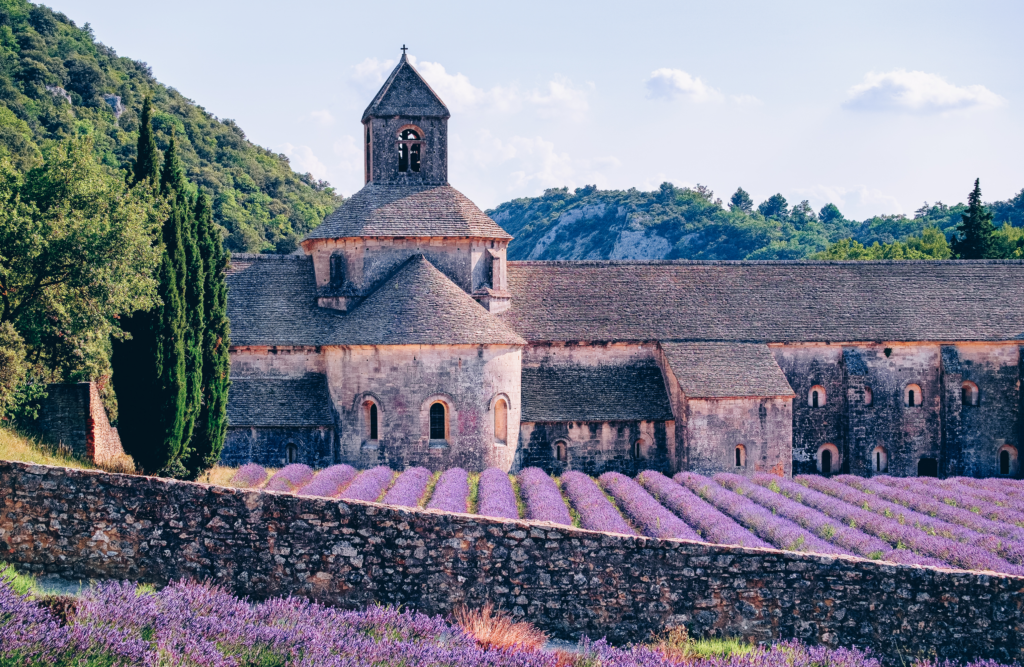
Dating back to the 12th century, this charming monastery seems as if it was lifted from a fairytale. The Cistercian architecture merges beautifully with its surroundings, creating a modest, yet picture-perfect setting, especially when its lavender fields are in full bloom under the warm southern summer.
The monastery lands were once used for agricultural and pastoral purposes to support the monks’ needs, but the current commercial lavender operation began in the 1970s. The community of the Cistercian brothers has cultivated lavender ever since, following the principle of “Ora et labora” (pray and work), to which they have remained faithful for more than a millennia. Besides the lavender, the brothers of the Abbey of Sénanque also produce and bottle olive oil and honey on premises that you can take home as a souvenir.
After you get your Instagram fill of lavender snaps, explore the interior of the abbey, open to (silent) visits at certain hours. You’ll find that the peaceful environment decompresses almost as much as the scent of lavender.
Sault-en-Provence to Ferrassière
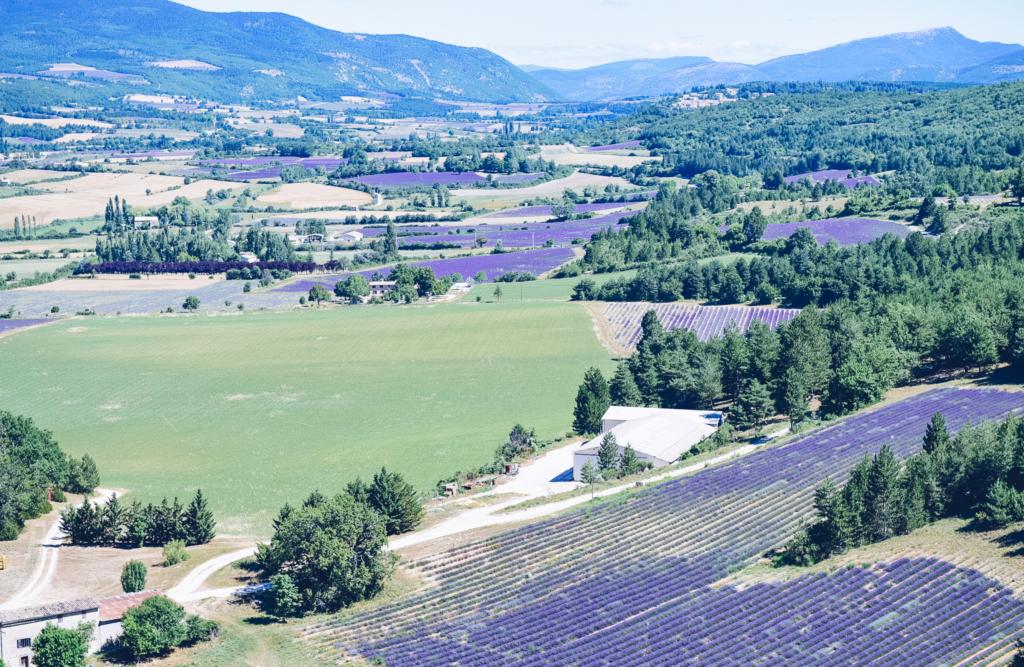
Arguably the birthplace of lavender in Provence, Sault-en-Provence is perched above the wheat and lavender fields that grow in this rich, pastoral land in Vaucluse.
In August, the village hosts one of the most important lavender festivals in Provence. The Fête de la Lavande celebrates the purple plant and has been an annual occurrence for more than 30 years. Expect locals parading in traditional Provencal costumes and lavender-festooned carts while people sing and dance in the streets. Don’t forget to visit the weekly Sault market, where local artists and producers display a plethora of regional products: from essential oils to sweets to decorative items.
A country-style lunch is also organized on the same day of the festival, in the Bois du Défends, where you can indulge in many specialties—from local charcuterie to goat cheese to fresh vine ripened tomatoes. But beware, spots are limited and must be reserved in advance!
For a peculiar and fun experience, don’t miss the contest to cut lavender with a sickle, organized on the hippodrome of Le Défends. The idea is quite simple: the candidates who succeed in cutting the most lavender in the time allotted win the grand prize.
If you’d rather go it alone, start north of Sault for a two-hour hike among purple lavender fields. When you’ve exhausted that experience, head back to the village and explore its medieval center, where charming stone houses sit on winding alleyways. Take a sweet break at André Boyer (circa 1887), the town’s historic confectioner, offering traditional artisanal delights such as nougat (a candy made from sugar, egg whites, almonds, and roasted pistachios) and guimauves (the French version of marshmallows).
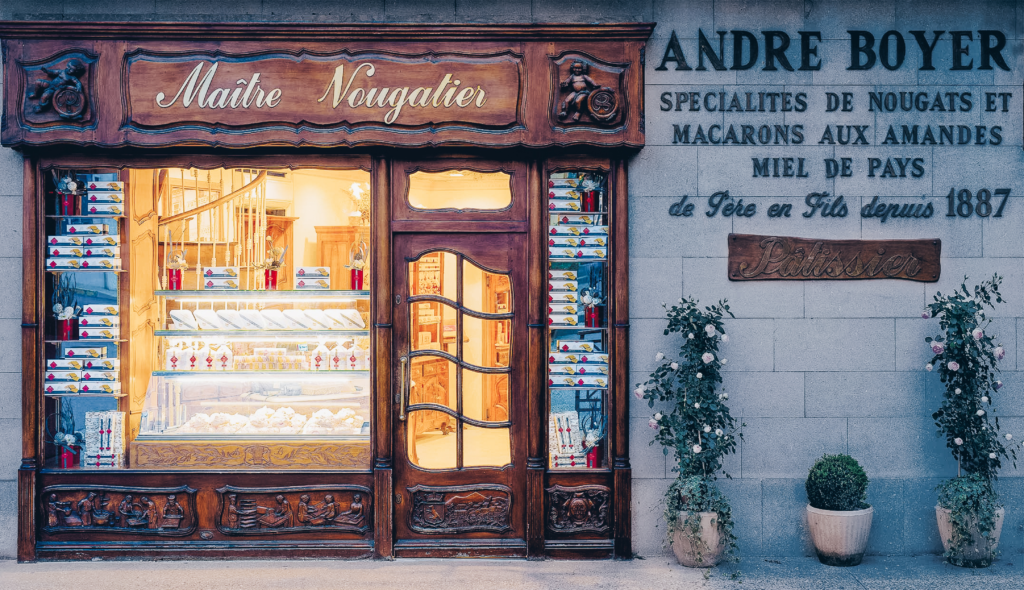
If you prefer thrilling adventures, respond to the call of the sky! The Ventoux Paragliding Club sets off from the top of Mont Ventoux and affords participants amazing views of the purple and green Sault Valley from the air.
And what if you could experience Provence like a real lavender farmer? Head to the Aroma’Plantes distillery where you can try your hand at pruning lavender with a sickle and a saquette. Afterwards, watch the distillation of the flowers you harvest, and make your own soap or cosmetic products, which you can take home as a souvenir!
After Sault-en-Provence, head south to Ferrassières, sitting proudly at more than 3,000 feet above sea level on the expansive Albion plateau. Here, you’ll have the opportunity to wander between violet fields with Mont Ventoux as a backdrop. Head along the Sentier Botanique de la lavande trail, starting at the parking lot of the “Ho! Bouquet de lavande” store. A guide will lead the way and explain the different varieties of plants you will see. On the trail, you’ll also discover curious stone constructions called bories, which were used as shelters for shepherds. They’re a great spot to have a quick bite or take a rest.
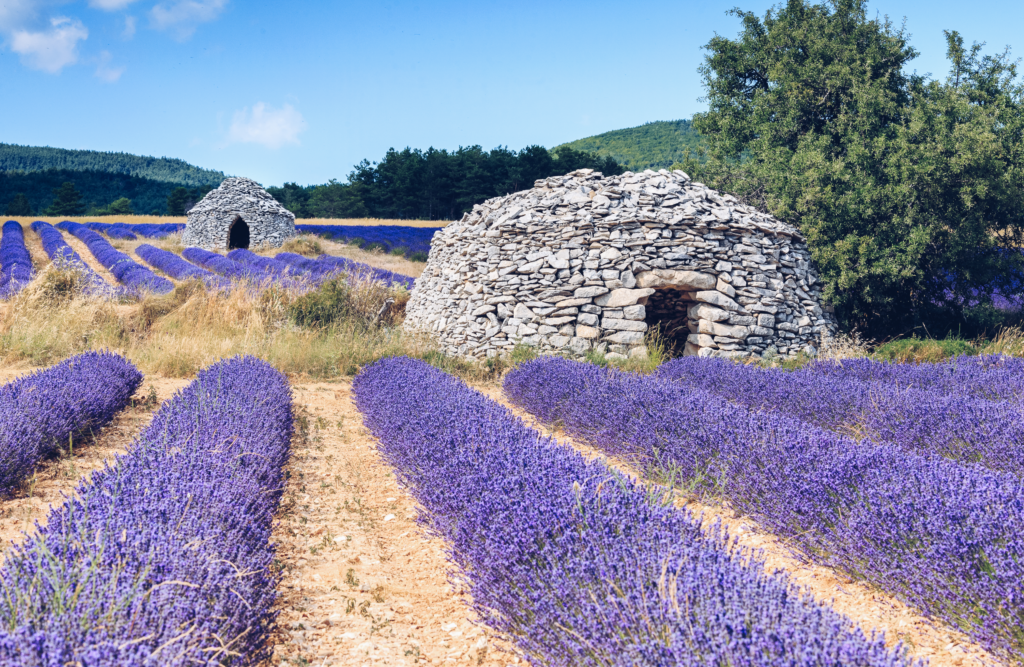
For cyclists, the Albion plateau affords well-marked trails and challenging hills. From Ferrassières, take Route 106 de la lavande. You’ll bike past Montbrun-les-Bains, a thermal village, until you reach the colorful town of Buis-les-Baronnies at the pinnacle. Breathe in the fresh air and take in the beauty of nature’s bounty.
Ferrassière to Simiane-la-Rotonde
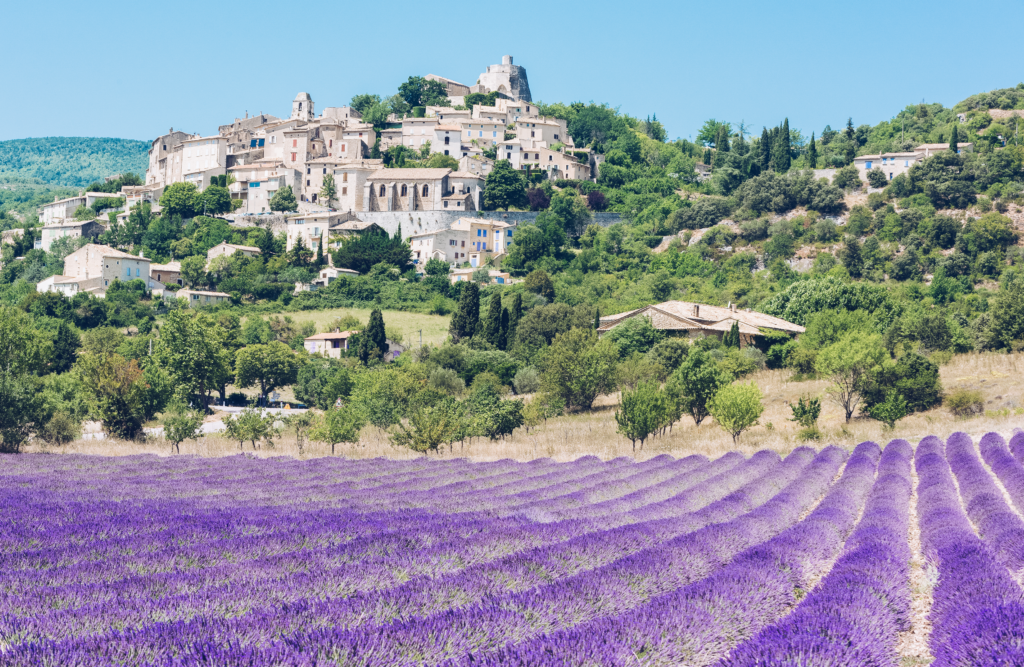
Continue further south from Ferrassières, and you’ll arrive at Simiane-la-Rotonde, set between the mountains and Pays de Forcalquier. This village consists of typical stone houses and boasts a historic castle with a singular rotunda.
Formed in the 12th century, the castle is a Romanesque gem hosting exhibitions and festivals, but also features archaeological specimens and historic artifacts. This is one of the most ideal spots to view the countryside in all of Provence.
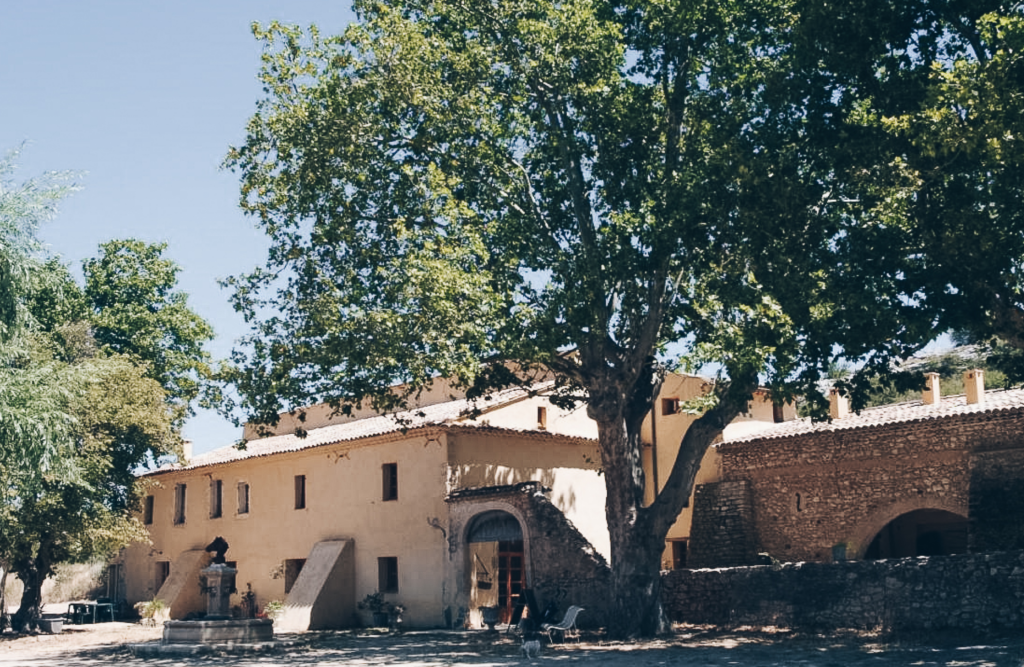
Besides its fairytale look, Simiane-la-Rotonde boasts rustic accommodations with an authentic Provencal feel. Gîte La Fontaine is one of the most ideal spots to rest your head. In addition to mouthwatering dishes prepared with local delicacies such as Sisteron lamb and truffles, the property raises horses and other farm animals. Guests can horseback ride around the farm and fields or take a carriage ride through the village.
Manosque to Valensole and Digne-les-Bains
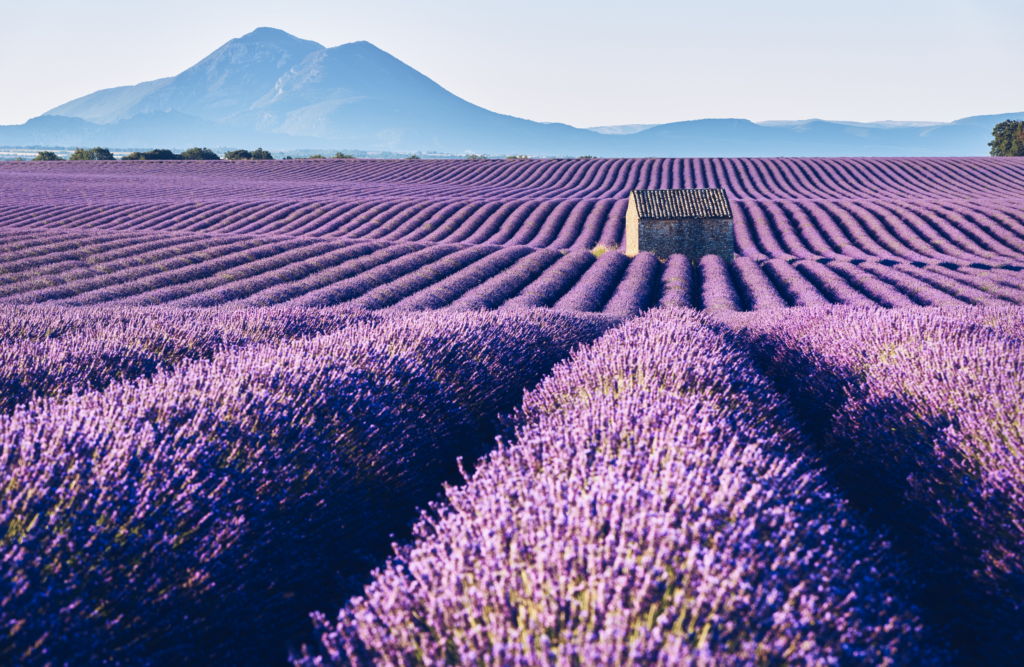
In Haute-Provence, if you venture on the lavender road between Manosque and Digne-les-Bains, you’ll have the Alps as your backdrop. Here, you’ll find the Valensole plateau, located in the Verdon Regional Natural Park, one of the prettiest spots in all of Provence.
Between Manosque and Valensole, lies Les Grandes Marges, a domain specializing in the cultivation of lavender, olives, and almonds. The domain offers tours of its lavender fields—if you haven’t had your fill yet—and also sells its homemade organic olive oil, essential oils and almonds. Pack a lunch and sit on the terrace or picnic area. End your tour with a scoop of Les Grandes Marges’ artisanal ice cream.
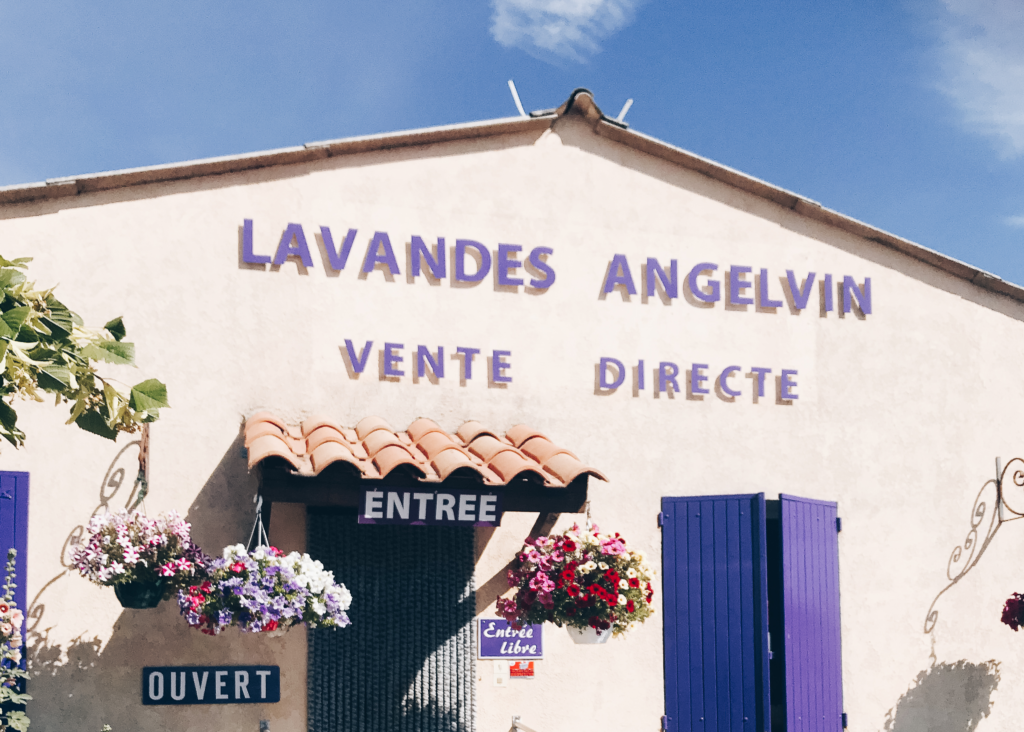
On the way to Valensole, you’ll come across Lavandes Angelvin, a charming local producer with lovely purple shutters, where you can, in addition to exploring the lavender fields, learn about lavender oil and floral water production.
Once you’ve arrived in Valensole, a charming village with labyrinthine streets, relax on one of the many terraces in town or take a trip to admire the small church of Saint-Blaise de Valensole that sits above the village.
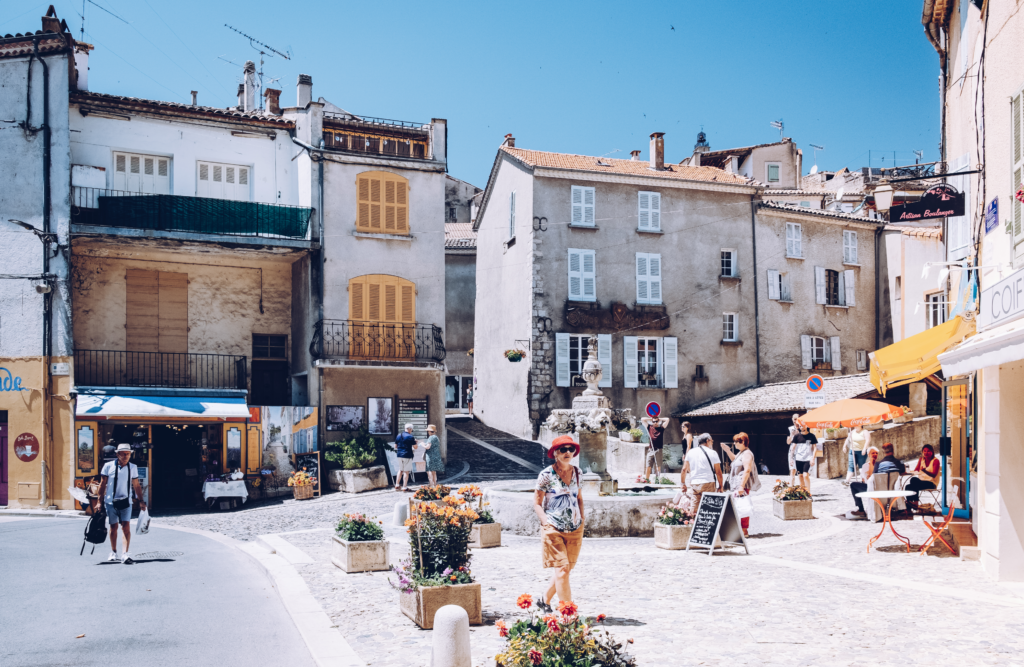
End your sweet-scented odyssey in Digne-les-Bains, one of the lavender capitals of Provence. Don’t miss the Corso de la Lavande from August 5 to 9, 2022, or the centennial of the Lavender Fair from August 25 to 29, 2022. Both events are hot tickets on the Provencal calendar.
During the four-day Corso de la Lavande, colorful bands parade through the streets, and once the sun sets, decorated carts light up the evenings, offering a festive vibe. If you prefer a more peaceful atmosphere, the Lavender Fair affords many opportunities to lose yourself in the scent and aroma of lavender permeating the stands.
After all that festivity and merriment, visit Saint-Jérôme cathedral, a neo-Gothic marvel, and relax in the thermal medicinal waters of Digne-les-Bains for an invigorating end of your lavender tour of Provence.
